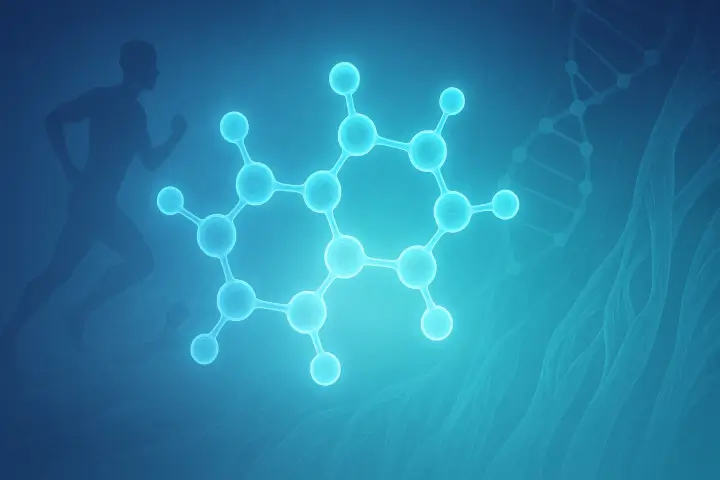Discover the latest scientific insights into the BPC 157 peptide, a promising compound under investigation for tissue repair, anti-inflammatory action, and gastrointestinal protection. This in-depth, evidence-based article unpacks the science behind BPC-157 capsules, examines potential health benefits, addresses safety concerns including BPC 157 side effects, and answers frequently asked questions.
What Is BPC-157?
Body Protection Compound 157 (BPC-157) is a synthetic pentadecapeptide derived from a naturally occurring protein found in human gastric juice. Bursting with potential, this peptide has captivated researchers due to its remarkable healing properties in preclinical studies. Laboratory and animal-model research suggests BPC-157 may accelerate wound healing, support muscle and tendon repair, and shield the gastrointestinal tract from damage.
As a stable, water-soluble peptide, BPC-157 can be administered via injection or orally in BPC-157 capsules. Its unique amino acid sequence appears to interact with growth factors, signaling pathways, and blood vessel formation-features that set it apart from many other therapeutic peptides. While human clinical trials are still emerging, preliminary data and anecdotal evidence (BPC-157 reviews) point toward diverse medical and performance applications.
Mechanism of Action: How BPC-157 Works
Promotion of Angiogenesis and Growth Factor Modulation
One of the most intriguing attributes of BPC-157 is its ability to stimulate angiogenesis, the growth of new blood vessels. According to a study published in the Journal of Physiology, the peptide upregulates vascular endothelial growth factor (VEGF), which is crucial for nutrient delivery and tissue regeneration. This interaction can lead to improved blood flow around damaged sites, fostering faster healing.
Moreover, BPC-157 appears to modulate the expression of key growth factors such as fibroblast growth factor (FGF) and transforming growth factor-beta (TGF-β). By fine-tuning these signaling molecules, the peptide coordinates cell proliferation, collagen synthesis, and matrix remodeling-events essential for robust tissue repair.
Anti-inflammatory and Cytoprotective Effects
Chronic inflammation hampers recovery in musculoskeletal injuries and gastrointestinal disorders alike. BPC-157 exhibits potent anti-inflammatory actions by downregulating pro-inflammatory cytokines (e.g., TNF-α, IL-6) and upregulating anti-inflammatory mediators. In animal models of colitis, administration of BPC-157 significantly reduced mucosal lesions, oxidative stress, and inflammatory cell infiltration.
In addition to modulating immune responses, BPC-157 protects cells from oxidative damage by enhancing endogenous antioxidant defenses. Reactive oxygen species (ROS) accumulation can cause further tissue injury; by neutralizing ROS, the peptide helps maintain cellular homeostasis and viability in stressed environments.
Key Applications of BPC-157 Peptide
Musculoskeletal Injury and Tendon Repair
Damage to muscles, ligaments, and tendons often leads to prolonged recovery times. Preclinical work has demonstrated that BPC-157 accelerates healing in tendon-to-bone injuries, reduces fibrosis, and restores mechanical strength. Athletes and active individuals have reported remarkable recovery rates in BPC-157 before and after scenarios, describing reduced pain and quicker return to full function.
Researchers theorize that the peptide’s pro-angiogenic and anti-inflammatory properties synergize to create an optimal healing microenvironment. Enhanced blood vessel growth delivers nutrients and immune cells to the injury site, while reduced inflammation minimizes secondary damage and scarring.
Gastrointestinal Protection and Ulcer Healing
BPC-157 shows promise in treating a variety of gastrointestinal conditions, including gastric ulcers, inflammatory bowel disease, and leaky gut syndrome. In rodent models of gastric ulceration, oral or intraperitoneal administration of BPC-157 significantly improved mucosal integrity, reduced ulcer size, and mitigated oxidative stress.
This gastroprotective effect stems from the peptide’s ability to stimulate mucosal blood flow, regulate nitric oxide synthesis, and enhance epithelial cell proliferation. By preserving the gut barrier and dampening inflammation, BPC-157 helps restore digestive health and nutrient absorption.
Health Benefits of BPC-157
The potential health benefits of BPC-157 span multiple systems and conditions. Although most data derive from preclinical studies, anecdotal accounts and early-phase research reveal a compelling profile.
- Accelerated wound healing and tissue regeneration
- Improved tendon, ligament, and muscle repair
- Anti-inflammatory and antioxidant protection
- Gastrointestinal mucosal healing and ulcer reduction
- Enhanced angiogenesis and blood flow to injured tissues
- Potential neuroprotective and cognitive support
- Reduction of pain and improvement in joint function
- Possible protective effects on the liver and kidneys
BPC-157 Peptide vs. Other Therapeutic Peptides
Therapeutic peptides like TB-500 and IGF-1 LR3 also target healing and regeneration, but BPC-157 stands out for its broad tissue distribution and dual action on inflammation and angiogenesis. Unlike some growth factors with short half-lives, BPC-157 remains stable in gastric juice and circulatory fluids, paving the way for both oral and injectable formulations.
The peptide’s safety profile, demonstrated in several animal-model studies, further differentiates BPC-157. Minimal adverse effects have been reported at therapeutic doses, positioning it as a promising candidate for future clinical applications.
Assessing Safety: BPC 157 Side Effects and Concerns
No compound is without risks, and vigilance is essential when exploring novel therapeutics. While BPC-157 has demonstrated an impressive safety margin in rodents, comprehensive human data remain limited.
Documented Side Effects
- Minor injection-site reactions (e.g., redness, itching)
- Transient headache or nausea (rare reports)
- Possible changes in blood pressure regulation
- No clear evidence of liver toxicity in preclinical studies
Reports of severe adverse events are virtually nonexistent in controlled settings. That said, long-term surveillance and well-designed clinical trials are needed to fully characterize potential BPC 157 side effects, particularly in special populations.
| Study Model | Route of Administration | Findings | Noted Adverse Events |
|---|---|---|---|
| Rats (colitis model) | Oral | Reduced mucosal lesions, improved antioxidant status | None significant |
| Rabbits (tendon injury) | Subcutaneous | Faster tendon healing, improved tensile strength | Mild injection-site erythema |
| Mice (gastric ulcer) | Intraperitoneal | Complete ulcer closure, enhanced blood flow | No systemic toxicity |
BPC 157 Before and After: Anecdotal Observations
A growing number of health enthusiasts share before-and-after accounts highlighting improvements in joint mobility, post-injury recovery times, and reductions in gastrointestinal discomfort. While such narratives offer valuable real-world perspectives (BPC-157 reviews), they should be interpreted cautiously until corroborated by rigorous clinical trials.
Nevertheless, these personal experiences underscore the peptide’s therapeutic potential. Reports commonly describe:
- Rapid decrease in pain and swelling
- Enhanced range of motion within days to weeks
- Better digestive comfort and fewer reflux symptoms
- Heightened resilience to new injuries
BPC-157 Dosage Considerations
Optimal dosing strategies remain an active area of research. Preclinical studies typically employ doses ranging from 10 to 500 micrograms per kilogram of body weight, administered once or twice daily. In the absence of standardized human guidelines, users often follow anecdotal protocols with doses between 200 and 500 micrograms per day.
Importantly, self-experimentation should be approached with caution. Medical supervision, quality assurance of peptide sources, and regular monitoring are essential for safety and efficacy.
Is BPC-157 Legal and Allowed in Sports?
The National Collegiate Athletic Association (NCAA) currently prohibits certain performance-enhancing substances. At present, BPC-157 is not explicitly listed among banned substances, but it could fall under the category of non-approved novel peptides. Athletes should exercise caution, consult anti-doping agencies, and verify the latest regulations to avoid inadvertent violations.
Summary Table of BPC-157 Benefits and Risks
| Aspect | Benefits | Potential Risks |
|---|---|---|
| Wound Healing | Accelerates tissue repair, reduces scarring | Injection-site irritation |
| Gastrointestinal Health | Heals ulcers, protects mucosa | Transient nausea (rare) |
| Anti-Inflammatory | Modulates cytokines, antioxidant effects | Blood pressure changes (possible) |
| Angiogenesis | Boosts blood flow to injuries | Unknown long-term effects |
Future Directions and Ongoing Research
Researchers are designing human trials to investigate BPC-157 in tendon healing, inflammatory bowel disease, and neuroprotection. Emerging studies aim to clarify pharmacokinetics, optimal dosing regimens, and long-term safety. Should these trials validate preclinical findings, the peptide could become a transformative tool for regenerative medicine.
Concurrently, efforts are underway to develop advanced delivery systems-such as sustained-release formulations-that maximize therapeutic benefits while reducing administration frequency. Such innovations could broaden the peptide’s clinical utility and patient compliance.
Conclusion
BPC-157 peptide holds significant promise for enhancing tissue repair, reducing inflammation, and safeguarding gastrointestinal health. Its unique mechanism-combining angiogenesis stimulation, growth factor modulation, and cytoprotection-distinguishes it from conventional therapies.
While current evidence is largely preclinical and anecdotal, the rapidly expanding body of research supports further investigation. For those exploring BPC-157 capsules or injectable formulations, informed decision-making, medical oversight, and stringent quality control are paramount. The future of regenerative medicine may well hinge on peptides like BPC-157, ushering in new possibilities for healing and recovery.
FAQs
What does BPC 157 do for the body?
BPC 157 promotes tissue repair, reduces inflammation, and stimulates new blood vessel formation (angiogenesis). It interacts with growth factors such as VEGF and FGF, accelerates wound healing in muscles and tendons, and protects the gastrointestinal mucosa from ulceration and oxidative damage. Overall, it functions as a cytoprotective and regenerative agent.
Is BPC 157 banned by NCAA?
Although not explicitly listed on the NCAA’s current banned substance list, BPC 157 could be classified under non-approved novel peptides. Athletes should verify up-to-date regulations, consult with sports authorities, and consider the risk of inadvertent doping violations before use.
What are the negative side effects of BPC 157?
Reported side effects are generally mild and include minor injection-site reactions (redness, itching), transient headache or nausea, and possible fluctuations in blood pressure. Preclinical safety data show no significant systemic toxicity, but comprehensive human studies are needed to define long-term adverse events.
Does BPC 157 affect your liver?
Current animal-model research indicates that BPC-157 does not produce liver toxicity and may even exert hepatoprotective effects under conditions of chemical or ischemic injury. However, human data are limited, so routine liver function monitoring is recommended when using this peptide therapeutically.

